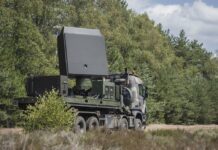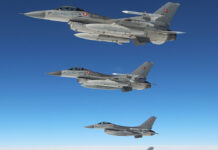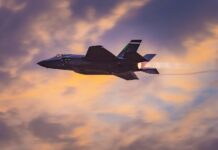Fundamental design requirements for the European shipbuilders of OPVs are changing. Potential operations can encompass a wide range of environments and missions, from patrolling Arctic regions to protecting underwater resources from economic exploitation in territorial waters as well as in Exclusive Economic Zones (EEZs).
Traditional war-type tasks have to be taken into account alongside search and rescue, border control and the management of clandestine emigration, while simultaneously securing the safety of navigation. As a result, designs for offshore patrol vessels are moving towards larger units capable of accomplishing a wide range of missions. Flexibility, modularity, and lower lifecycle costs are emerging as fundamental requirements. The desirability of larger, armed platforms that can operate on the high seas, conduct operations with helicopters and unmanned autonomous vehicles, and deploy similar vehicles under and above the surface are becoming increasing design influences. At the other end of the spectrum, the capability of supporting disaster relief operations remains an important capability.
France
The French naval industry is the most prolific in building patrol vessels for navies, homeland security agencies and coast guards or similar bodies. A large number of programmes for domestic and international customers are currently underway:
Patrouilleurs Hauturiers: In October 2021, the French defence procurement agency (DGA) awarded Naval Group a contract for the preliminary and detailed design of the Ocean Patrol Vessels or ‘Patrouilleurs Océanique’ (PO). Subsequently, the programme’s terminology has changed to ‘Patrouilleurs Hauturiers’ (PH) or OPVs. Naval Group is in charge of the project architecture and therefore responsible for the new vessels design. Ship construction will be assigned to the Socarenam, CMN and Piriou shipbuilders. With an estimated displacement of over 2,000 tonnes and a length in excess of 90 m, the new platform will have an extended endurance. The combat system is expected to be provided by Naval Group.

Credit: Naval Group
Sensors will include a multifunction radar and a hull-mounted sonar supplied by Thales. To replace the current nine A69 and three OPV54 class patrol vessels, the PH will have flight deck and hangar for at least one Airbus Guépard Marine type helicopter and either fixed-wing or rotary-wing UAVs. Armament will include a 40 mm remote weapon station (RWS) and machine guns. According to the French Military Programming Law 2024-2030 unveiled on 4 April 2023, shipbuilding contracts are expected to be awarded from 2023, with a total of seven platforms to be in service by 2030. According to complementary documentation presented to the French Parliament, three more PHs are planned by 2035.

Credit: Kership
Bouchard Class (OPV-90): Naval Group delivered the last of four Bouchard class OPVs to the Argentine Navy in April 2022. This platform – the OPV 90 – has a displacement of 1,650 tonnes and is 87 m in length. It is constructed by Kership, Naval Group’s and Piriou’s joint venture. Equipped with Naval Group’s ‘Polaris’ combat management system (CMS) and a 30 mm RWS, it features a flight deck for a 10-tonne helicopter, a hangar for a helicopter of 5 tonnes, UAV facilities and two stern stations for 9 m RHIBs.
During Euronaval 2022, Kership announced a new expansion of its patrol vessels portfolio, which is now centred on two large families, one for navies and the other for coast guards. The first family includes OPV models of 45, 60, 65, 70, 80, 85 m in length, alongside the OPV 90 m model. As a baseline, all are equipped with a combat system and offered with a 76/62 mm Leonardo Super Rapid gun, surface-to-air missiles (MBDA VL MICA or Simbad-RC with Mistral), Exocet or Marte anti-ship missiles and machine guns. The OPV 85 incorporates a flight deck for a helicopter of 12 tonnes and a hangar for a 6-tonne helicopter plus UAVs. Two 9 m RHIBs can be operated via stern ramps.

Credit: OCEA
The coast guard family encompasses OPVs ranging from 45 to 85 m in length, with the larger OPV 85 CG having a displacement of 1,750 tonnes. It is 84 m length and features a 12-tonne flight deck (plus a hangar for a 6-tonne helicopter and UAVs).
OCEA-designed Patrol Vessels: Specialised in the design, construction and support of aluminium vessels, the French OCEA shipyard has further expanded its portfolio, adding a family of multipurpose offshore vessels (OSVs) to its range of OPV products, which include 83.6 m, 72 m, 58 m and 46.2 m platforms. According to OCEA, their OPV 270 model – with a length of 83.6 m – is the largest aluminium-hulled OPV on the world market. It offers a number of benefits compared to steel construction, including lower emissions and improved maintenance, acquisition and operating costs. The OPV 270 design is currently in service with the Philippine Coast Guard.
With diesel or optional diesel-electric propulsion, the OPV 270 offers maximum speeds of 20 to 25 kn and a range of 8,000 nm at 12 kn. It can accommodate a crew of 35 (plus an additional 35 personnel).The OPV 270 features a 360° panoramic bridge with a separate large command and control centre, a flight deck for a helicopter of 10 tonnes, and a hangar for a helicopter of 5 tonnes. Small UAVs and two 9 m RHIBs can be operated. The armament is based on a 20 or 30 mm main gun. OCEA also offers its 72 m OPV 230. This model’s hybrid propulsion package uses electric movers for about 60% of the time (resulting in a low environmental footprint) whilst still offering a top speed of 25-to-30 kn.
The new OSV family includes the 95 m OSV 315, the 75 m OSV 250 and the 40 m OSV 130 platforms. The two largest designs are modular platforms designed around a 125-220 m² mission bay. There is also a 64 m² laboratory on the OSV 315.
Patrouilleurs Outre-Mer (POMs): Under a contract awarded by DGA in late 2019 to an industrial team headed by Socarenam partnered by Mauric and CNN MCO, the French Navy is receiving six new 80 m OPVs to be based in the French overseas territories of Réunion, New Caledonia and French Polynesia. The new 1,300-tonne OPVs incorporate a hybrid diesel-electric propulsion system offering a 24 kn maximum speed and a range of 5,500 nm at 12 kn. Endurance is reportedly 30 days. The platforms are operated by a crew of 30 while additional 23 personnel can be accommodated. The OPVs have a flight platform and aviation facilities for unmanned fixed- and rotary-wing air systems. Two 8 m RHIBs are part of the equipment and one standard container can be accommodated. The combat system is based upon the Lyncea CMS by Nexeya France, an offshoot of Hensoldt group. The OPVs are armed with a Nexter Narwhal 20B 20 mm RWS and machine guns.

Credit: French Navy
The first unit was delivered and arrived in Nouméa, the New Caledonia on 3 April 2023. The follow-on POMs will be delivered by 2025. CNN MCO is to provide in-service support.
Socarenam is also involved in other OPV programmes. Notably, in July 2022, the hull of a new 70 m OPV for the Polish Border Guard was launched by Polish NavireTech shipyard in preparation to its transfer to Socarenam in France. The contract was awarded in October 2020 and delivery is planned in 2023. The project is funded by the European Union and intended primarily to patrol EU’s external borders. Featuring a reinforced hull and accommodation for up to 35 people, crew included, the OPV will operate a 10 m RHIB, a UAV and carry two TEU (20 ft equivalent unit) containers. The OPV is designed for one month’s endurance. Up to 250 survivors can be hosted for 24 hours.
CMN-designed Patrol Vessels: The Cherbourg-based shipbuilder CMN (CMN Naval Group) unveiled its new ‘Vigilante Mk II’ design at Euronaval 2022. Based on the success of earlier platforms sold to Brazil, France, Oman and Gabon, the new OPV family ranges from 45 to 75 m in length. They feature new hulls with a sharp inverted bow and slender bulb. According to CMN, the design offers improved hydrodynamics, better seakeeping capabilities, reduced fuel consumption and prolonged endurance while providing greater comfort and safety for the crew.
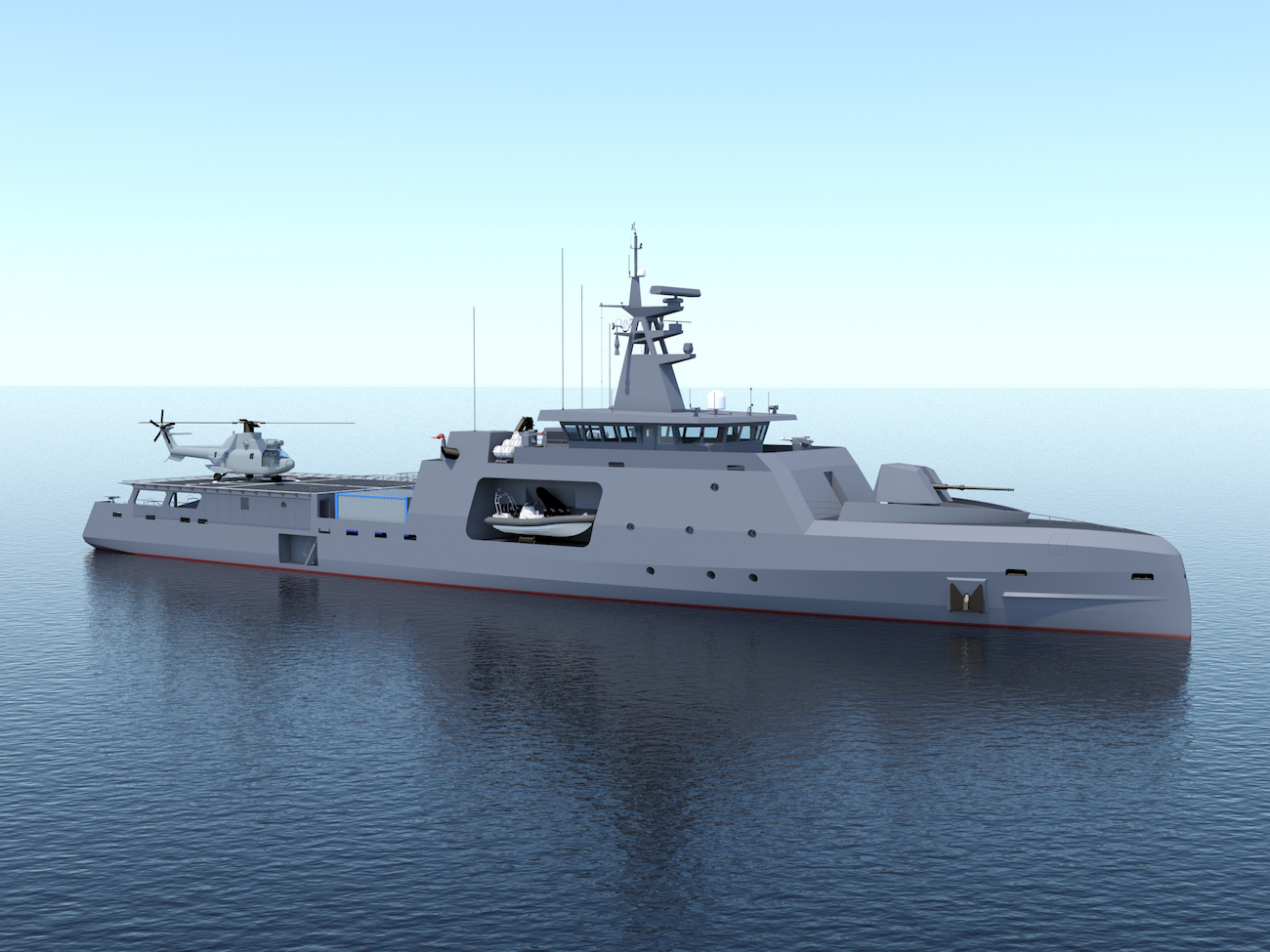
Credit: CMN
The larger 75 m CL75 Mk II model can achieve a range of 7,000 nm at 12 kn. Accommodation for 65 personnel is available as well as space for positioning of TEU containers. The flight deck can carry a 12-tonne helicopter and UAVs. RHIBs up to a maximum length of 9 m can be operated via two stern ramps. The combat system includes a Leonardo 76/62 mm gun, two 30 mm RWS and lightweight anti-air as well as anti-ship missiles. The smaller 64.8 m CL65 Mk II and 54 m CL55 Mk II have landing platforms for Schiebel Camcopter S-100 UAVs as well as areas for containers storage. The 45.6 m CL45 Mk II has space for catapult-launched small UAVs, such as the Survey Copter Aliaca. The RHIBs can be launched from the stern or laterally. The main armament is one 20 mm or 40 mm gun.
Germany
Fassmer OPV Designs: The German shipbuilder Fassmer has enlarged its portfolio. OPV solutions range from platforms of between 50.90 m and 80.70 m in length. Another series of Littoral Mission Vessels are offered in lengths of between 60.20 m and 94.70 m. The baseline OPV 80 has a length of 80.70 m, a beam of 14 m beam and a displacement of 1,850 tonnes. Two other variants come to a displacement of 1,500 tonnes (OPV 80L) and 1,950 tonnes (OPV 80S) respectively. In December 2019, Fassmer succeeded in contracting another variant, the MPV 70 Mk II, for the Ecuadorian Navy. The unit will be completed at ASTINAVE EP shipyard. Delivery is due in 2024.

Credit: Fassmer
Conceived as a multipurpose combat vessel, the new vessel’s design combines a forward part dedicated to the management of ship and combat functions, with the central and stern sections supporting other purposes. Other characteristics are a 360° panoramic bridge and an integrated mast with an extensive sensor suite. The latter is a development between Virtualabs of Italy, and ASTINAVE EP. The large flight deck can carry an 11-tonne helicopter. Two launch and recovery stations for interceptor craft are situated beneath it. Armament includes a Leonardo 76/62 mm Super Rapid gun and two Rafael 25 mm Typhoon RWS. The combat management system is ASTINAVE EP’s Orion.
NVL OPV Designs: The German NVL shipbuilding group (previously Lürssen) has strengthened its worldwide presence through a broad portfolio of naval units. NVL OPVs can meet evolving operational requirements, encompassing units with displacements of between 600 and 2,500 tonnes and lengths ranging from 60 to 120 m. The series ranges from the smallest-sized OPV 60 to the largest OPV 90. The Royal Brunei Navy’s Darussalam class is typical of the family. It incorporates a flight deck for an 11-tonne helicopter, launch and recovery stations for two 9 m RHIBS and has space for two 20 TEU containers. A customised variant of this design has formed the basis of Lürssen Australia’s contract with the Australian DoD for the SEA 1180 programme. It encompasses the construction of 12 Arafura class OPVs for the Royal Australian Navy. Lürssen Australia is operating in partnership with ASC and the Civmec group to complete the contract. The first unit was launched in December 2021.

Credit: Australian DoD
The platforms have a displacement of 1,640 tonnes and are equipped with a helicopter flight deck with a UAV capability. A stern bay for mission modules and launch/recovery stations for a 10 m RHIB and two 8.5 m booster boats are installed. The combat system is manufactured by Saab Australia and includes links to a sensor suite incorporating systems constructed by Saab, Terma and Safran. The armament package is to be finalised, with an interim outfit of a 25 mm RWS to be installed initially.
Italy
The Fincantieri group offers a portfolio of new generation FCX family vessels ranging from 60 m (FCX 07) fast attack and patrol vessels to 120 m (FCX 40) frigates.
The 88 m FCX 15 platform – with strong links to the pedigree of the Abu Dhabi class corvette and Cigala Fulgosi class OPV designs, is available in patrol and combatant variants. With a 1,500-tonne displacement and 25 kn speed, FCX 15 has a retractable hangar, a flight deck for a 10-tonne helicopter, a modular area for containers and two 7.5 m RHIBs. Characterised by a reduced manning requirement, the combat version is equipped with a Leonardo 76/62 mm gun, two 25/30 mm RWS, a RAMSys RAM system and four MBDA Exocet anti-ship missiles. The sensor suite consists of a 3D multifunction radar and fire control systems.
The larger FCX 20, of 95 m length and with a displacement of 2,300 tonnes, reaches a top speed of 25 kn. Her indicative range is 4,500 nm at 14 knots. The new dual-variant design features a stern flight deck for a 10-tonne helicopter with a fixed hangar for a helicopter and UAV. The combat system includes vertical launchers for surface-to-air missiles, as well as surface-to-surface missiles.
The Italian Navy is looking to replace its OPVs and its corvettes with a mix of smaller OPVs and larger platforms, such as the future European Patrol Corvette/Modular Multirole Patrol Corvette (EPC/MMPC). The programme was previously known as PPX. The indicative requirement is for units of 90-100 m length and 2,200 tonnes displacement with diesel-electric propulsion. Other features include a flight deck and hangar to accommodate both a 10-tonne helicopter and a UAV. A 9 m RHIB launch/recovery station is located at the stern whilst two 7.3 m RHIB stations are positioned amidships on either side of the modular mission bay. To allow reduced manning, the combat system provides for a customised ‘naval cockpit’ and new generation sensors for surveillance and for fire control of a 76/62 mm gun and two 30 mm RWSs. An initial contract for up to 4 PPXs is expected to be signed later in 2023.
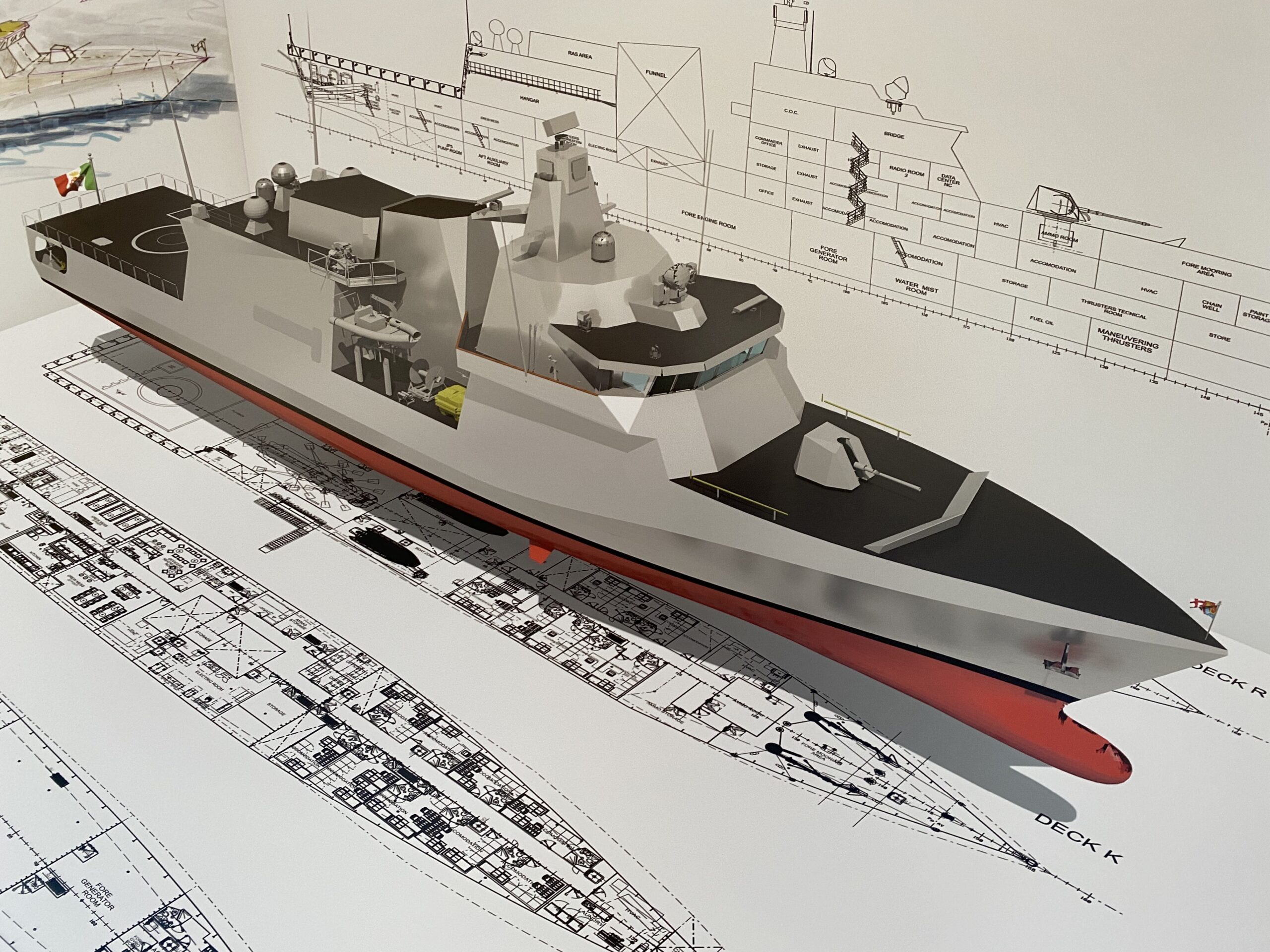
Credit: Luca Peruzzi
A subsidiary of Fincantieri, Norway’s Vard, is close to delivering the first of three 136.4 m Norwegian Coast Guard OPVs designed for Arctic operations. KV Jan Mayen and her sister-ships will have an ice-strengthened hull, a helideck and hangar for either one Leonardo AW101 or one NH90 helicopter, accommodation for up to 100 persons and an endurance of eight weeks. The combat suite includes state-of-the-art sensors and a 40 mm gun.
Another Fincantieri company, Vard Marine, Canada, is offering its Vard 7 125 Next-Generation OPV design, which obtained Lloyd’s Register ‘Approval in Principle’ in May 2022.

Credit: Vard/Norwegian Coast Guard
To satisfy Italian Coast Guard needs for search and rescue, maritime safety and environment protection, Fincantieri – as prime constructor – together with Cantiere Navale Vittoria – as shipbuilder – have won a contract for the construction of three 85 m multirole offshore support vessels to be delivered from the second quarter of 2025. In March 2023, Cantiere Navale Vittoria delivered the OPV P71 to the Armed Forces of Malta, thereby effectively entering the larger OPV sector. The OPV is 74.8 m long and has a displacement of 1,800 tonnes. Its prominent features include a 360° panoramic bridge, a hybrid propulsion system, a flight-deck for a helicopter of the size of Leonardo’s AW139, two stations for 9.1 m RHIBs – one astern and one on starboard side – and a 25 mm RWS.
The Netherlands
Built by Damen Naval, the four Royal Netherlands Navy’s Holland class OPVs are designed for trans-Atlantic deployments to the Dutch overseas territories in the Caribbean. Their displacement is 3,750 tonnes with a length of 108 m. A dominant characteristic is their Integrated Mast Module or I-Mast, which incorporates a sensor package provided by Thales. The class’s armament consists of Leonardo 76/62 mm, a Marlin WS 30 mm and two Hitrole 12.7 mm RWS. The stern flight deck and hangar are equipped for a medium sized helicopter. These OPVs can deploy two FRISCs (Fast Raiding Interception Special forces Craft) – one from a launch/recovery station in the stern below the flight deck, the other from a bay on port side.
Damen Naval also offers its globally-known portfolio of StanPatrol vessels. This part of the Dutch shipbuilder’s portfolio starts from units of 13 m length. The larger platforms of over 60 m are characterised by the Sea Axe bow. This is designed to reduce water resistance, enable superior seakeeping, and ensure sustained high speeds (max 25/26 kn) in high sea states.
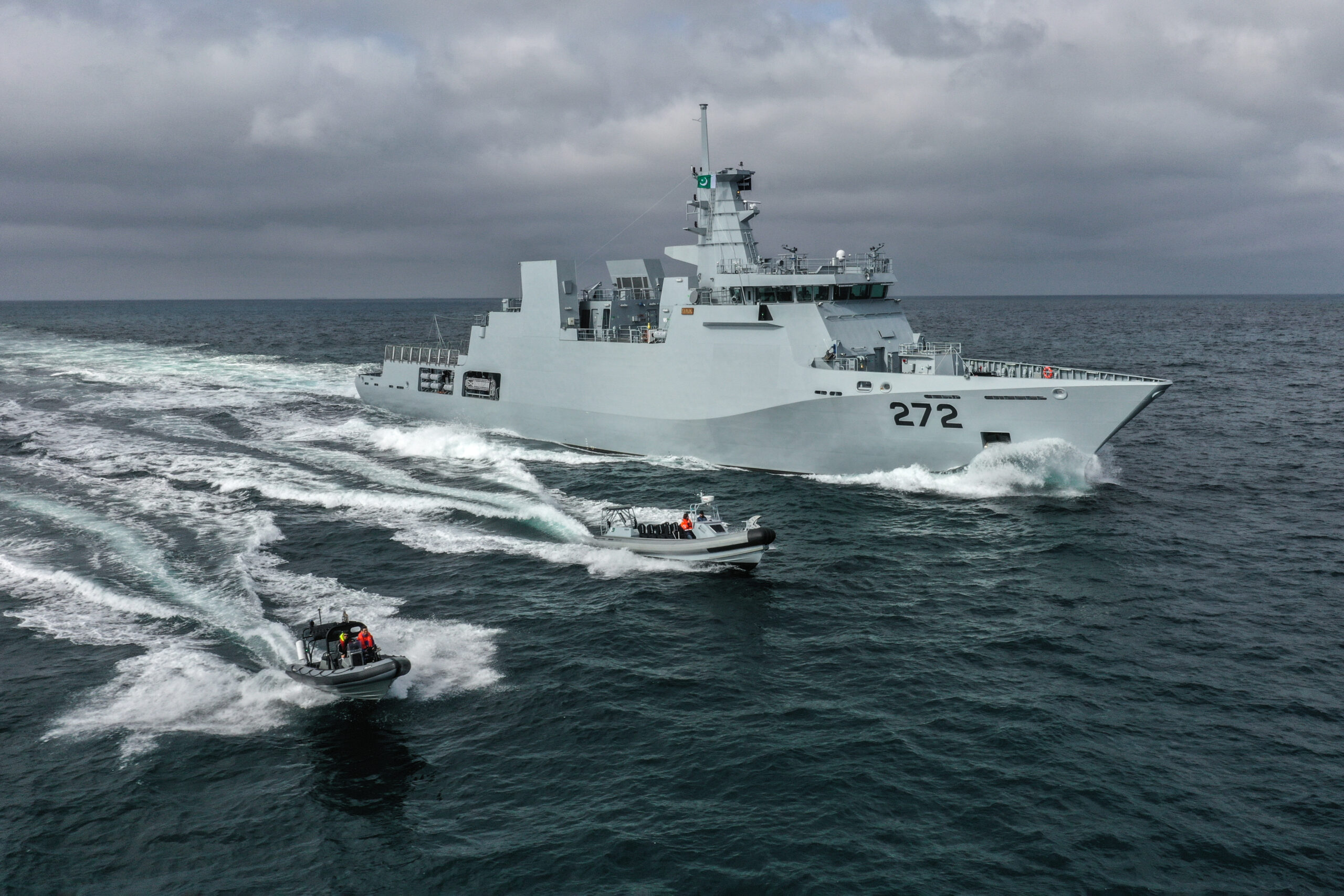
Credit: Damen
Another platform in Damen Naval’s OPV register is the Damen 1900 type. The Pakistan Navy has commissioned two of these units as the Yarmook class. The ships have a length of 90 m and a displacement of 2,300 tonnes. They can launch two RHIBs of, respectively, 11.5 and 6.5 m from stern and lateral stations, have a flight deck for both helicopter and UAV operations and can accommodate two TEU containers for special missions. The Yarmook class is armed with an Aselsan 30 mm Smash and two STAMP 12.7 mm RWSs, as well as a Phalanx Block 1B inner-layer defence system. Additionally, Harbah anti-ship missiles are to be installed at a later stage.
The performance and capabilities of these vessels has led to a new order for two larger platforms known as the OPVs 2600 Batch-II. According to released images, these OPVs have a more powerful combat system including a Leonardo Marlin 40 mm RWS, surface-to-air missiles vertical launchers, an Aselsan Gokdeniz inner-layer defence system, Harbah anti-ship missiles and 12.7 mm RWSs.
Portugal
To complement the four in-service Viana do Castelo class OPVs built by West Sea shipyard, in late 2022 the Portuguese Government confirmed plans to build additional six platforms to be delivered by 2026-2030. A contract has not yet been signed.
Spain
The shipbuilder Navantia offers its Avante OPV family portfolio for both EEZ and maritime security missions. Platform sizes range from 300 to 3000 tonnes. A derivative of the Avante 3000 concept, the 2,860-tonne displacement Meteoro class is in service with the Spanish Navy. This design is also categorised as the ‘Buque de Acciòn Maritima’ (BAM). Navantia has also previously delivered four ‘Patrulleros Océanicos de Vigilancia’, of 2,250 tonnes, and four ‘Buques de Vigilancia’, of 1,500 tonnes, to the Venezuelan Navy.

Credit: Navantia
The Avante 2200 patrol vessel has a displacement of 2,455 tonnes and is 98.9 m in length. It can reach a speed of 25 kn by means of a twin diesel-based propulsion package. The maximum range is 3,500 nm. With a flight deck and hangar for a 10-tonne helicopter and facilities for two 5.5 m RHIBs, the OPV can be armed with a 76 mm and 35 mm guns, as well as surface-to-surface missiles and vertical launched surface-to-air missiles. The Avante 1400 design, of 1,500 tonnes and 79.9 m in length, can reach 22+ kn and features a flight deck for a medium-size type Eurocopter AS 565 Panther helicopter and three RHIBs. The Avante 1400 is offered with a combat system and armament package that includes a 76/62 mm Super Rapid main gun, a Rheinmetall 35 mm Millennium inner-layer defence system and two 12.7 mm machine guns. Accommodation is available for a crew of 35 plus 29 extra personnel.
The Spanish shipyard is currently working on a contract for an OPV programme for the Royal Moroccan Navy. No further details were provided on the selected platform. However, according to local media, the OPV is part of the Avante family, with a displacement of about 1,500 tonnes and a length of around 80 m.
Turkey
In April 2022, Turkey’s state-owned company ASFAT announced the completion of the critical design phase (review) and the start of hull section production for the new Hisar class, a series of 10 OPVs for the Turkish Naval Forces. According to released information and drawings, AFSAT has derived the new platform from the MILGEM corvette. The Hisar OPVs will displace 2,300 tonnes and be 99.5 m in length. Their flight deck and hangar will support the operations of a 10-tonne helicopter. Configured in CODELOD (Combined Diesel-Electric Or Diesel) format, the propulsion package will be capable of providing a 24 kn top speed and a 4,500 nm range. Accommodation is provided for 104 persons. Armament includes a 76/62 mm and 12.7 mm guns.
The Turkish naval industry, including TAIS, Dearsan, RMK Marine, STM and Ares are also very active in the OPV and patrol vessel segments of the international markets. Dearsan is currently building two 1,100 tonnes and 76 m OPVs for the Nigerian Navy.
United Kingdom
BAE Systems Maritime offers an OPV family comprising 80 m and 90 m. The Royal Navy currently operates five OPVs built to the River class Batch 2 standard alongside three remaining Batch 1 platforms. BAE Systems supports them under a logistics support contract. BAE’s OPV designs have also been exported to Brazil and Thailand.
The Batch 2 platforms differ from the previous Batch 1 vessels in the shape of their hull form and full width superstructures. Their strengthened flight deck allows operations with the Leonardo Merlin (AW101) helicopter. The Batch 2 features BAE Systems’ CMS-1, and a sensor suite centred on Terma Scanter 4100 2D radar, a 30 mm DS30M Mk2 RWS, two 7.62 mm miniguns and two general purpose machine guns.

Credit: UK MoD Crown Copyright
Elsewhere in the British naval sector, BMT is proposing a concept for a utility auxiliary of 90-110 m. Named Salvas, it is designed to accomplish a range of missions including EEZ protection, salvage, maintenance, and search and rescue.
Among other European nations, the Danish OTM (part of of Naval Team Denmark) developed the three Knud Rasmussen class Arctic OPVs. The ships were built by Karstensens shipyard and are in service with the Danish Navy today. Described as hybrid arctic working horses with worldwide capabilities, they have a displacement of 2,600 tonnes and are 72 m in length. Four Standard Flex container positions enable them to be fitted with a 76 mm gun, as well as Sea Sparrow Mk 56 surface-to-air and Harpoon anti-ship missiles.
Luca Peruzzi





